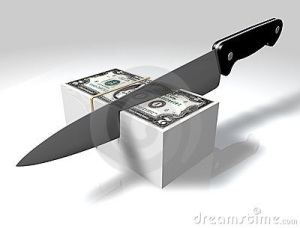When I first joined Engro Foods in late 2005, most friends thought it was my version of madness and a withdrawal into failure. To drop out of main stream corporations, return to Pakistan and join a company which (at that time) was just a hole in the ground in Sukkur, was considered sub-optimal. That the decision turned out well, is not the subject of this blog. A great team with a strong passion to add to Pakistan was what made it happen, and I was blessed, lucky and at the right place.
Be that as it may, my main topic here is about events which happen, when companies which are young, graduate into becoming successful institutions. This is about the journey of growth and how it pans out.
During the first four years or so, the company was characterised by a young lot of people with an adventurous mind-set. There was no 'impossible', it was totally interconnected and anyone could come up with ideas. Hierarchy was just 'by the way'. Someone ten steps junior could walk in to tell me I was wrong and suggest change. Engagement was absolute. Fun was absolute. Risks were the bread and butter of the day. There was no need to be afraid of innovation. If it failed, we would learn and move on. If it was successful, we would enjoy the fruits and look for new directions. Speed was incessant. Decisions would be taken with sufficient data points (but not many), based on belief, experience and a willingness to risk failure.
This was where our Board of Directors with Asad Umar as Chairman, played a huge roll. They were part of the adventure, and as events unfolded, so they were there in spirit. Very easily at some stage Asad could have said enough, and pulled this determined horse and broken it into shape. They chose not to and in taking that risk went along with the whole. It was a rollicking journey, full of passion, fun and successful - as I could never have imagined at the beginning of things.
I vividly remember the period it all started changing. The day I knew it was no more an adventure, but a business and an institution. And with that went the most 'happening years' of my professional existence. Sometime third quarter of 2009, our retail audit share data identified that EFL had now overtaken Nestle for the liquid share of the market, with Haleeb running a distant third. EFL had arrived! And suddenly came the realisation that we have a large structure, which was worth a lot and which we could not put at risk anymore.
The Board knew we were worth a lot of money and the valuations told us that. It started looking at institutionalising EFL. Till that day, the human content ruled process, but suddenly process became the master. We had systems before this also, but if need be, we could reach down and change things at the drop of a hat. That was the basic tenet of our speed equation. By 2010, we had implemented SAP and put in an online realtime system for milk collection and also totally structured our HR processes. Our factories had thousands of SOPs and we could not mould and break things to make action happen. Our human numbers reached into thousands and when one went for a market or milk collection visit, there were so many colleagues one did not know. That family feeling was gone. We were turning into a machine. The feeling was accentuated, when we were listed in 2011 and were subject to market evaluation norms and the KSE rules.
This is a perennial problem in creating institutions. While the goal is sustenance and longevity, but the truth is that the process is better done by other sorts of people. Not everyone is suited to this institutionalisation game. Hence, over the years most of the original employees of EFL have gone to other pastures - most of them are doing that same greenfield stuff in various new adventures. What has cropped up instead, is a more mainline company and human resource, who over time will learn to sustain EFL's position and with steady growth and systems, make it a giant for the future. Simply put, the company will step from one orientation box into another.
Sadly size has a price to pay on both a personal and company level, as has been shown in this change from one orientation to another, with a new set of leaders facing that change. The trick will be to ensure institutionalisation does not kill the innovation and passion of people. Easier said than done, unfortunately. I can foresee years of dedicated effort by the new team, which would then lead to this institutionalisation being achieved.






